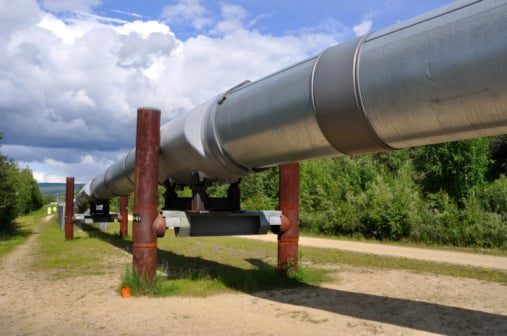Oil prices are, off and on, either a threat to the economy or a potential help to the growth of gross domestic product (GDP). The swing recently has been toward a threat, as crude has spiked above $100, up from $90 little more than a month ago. The rapid 11% increase could trigger high fuel prices, which in turn would eat into corporate profits and consumer income. Source: Thinkstock
Source: Thinkstock
The culprits for the rise, at least on the surface, are record low temperatures in parts of the Northern Hemisphere, threats to supply from the Middle East and dwindling supply from huge producing regions that include Mexico and the North Sea.
The Independent recently reported on North Sea output:
Despite the resurgence in the North Sea, which analysts have forecast could create 50,000 new jobs, production will remain well below its peak level of about 4.5 million barrels in 1999.
As far as Mexico goes, Bloomberg recently reported:
Pemex, as the state-owned company is known, pumped an average of 2.523 million barrels a day in 2013, the ninth consecutive year of declines, according to a preliminary report.
Simultaneously, organizations such as the World Bank and International Monetary Fund have increased, albeit modestly, their forecasts for global GDP growth, and confirmed their opinion that China’s economy will barely slow and that the U.S. economy will continue to recover. Taken as a whole, many economists believe this will drive a long period of strong demand for crude. While production from some nations, particularly the United States, will increase, the OPEC nations have shown absolutely no interest in moving their production higher.
A great deal has been made about U.S. energy independence. The success of shale production has triggered most of that. However, there has been a ban on the export of American oil. Rising supply may help offset U.S. demand, but the supply improvement will not help other nations.
Traditionally, the cost of oil has been passed along via higher prices for gasoline, home heating products and petrochemicals. Because the expenses for refining are hard to peg, it will take weeks for the effect of $100 oil prices to be established. However, whatever the effect may be, if crude’s price plateaus above $100, or rises back to $105 where it traded last August, the severe threat to the U.S. economy will rise.
Sponsored: Find a Qualified Financial Advisor
Finding a qualified financial advisor doesn’t have to be hard. SmartAsset’s free tool matches you with up to 3 fiduciary financial advisors in your area in 5 minutes. Each advisor has been vetted by SmartAsset and is held to a fiduciary standard to act in your best interests. If you’re ready to be matched with local advisors that can help you achieve your financial goals, get started now.
Thank you for reading! Have some feedback for us?
Contact the 24/7 Wall St. editorial team.


